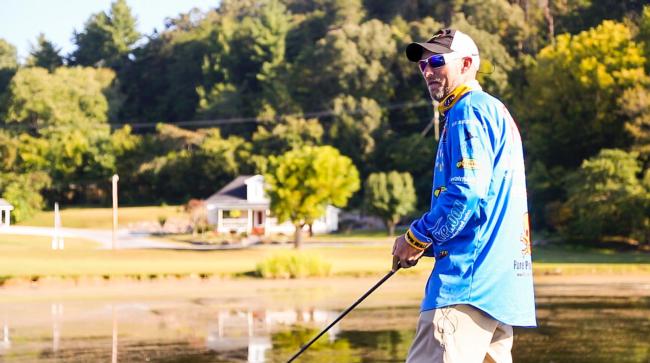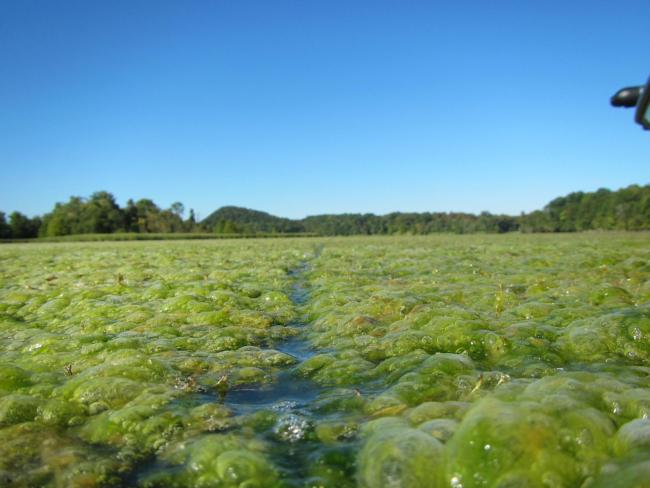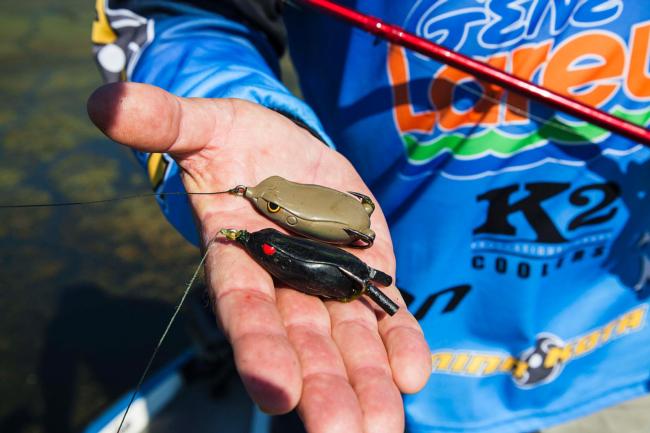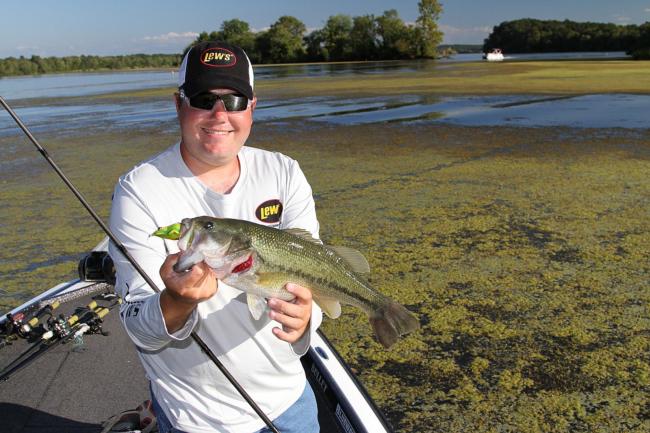Froggin’ Fall Mats
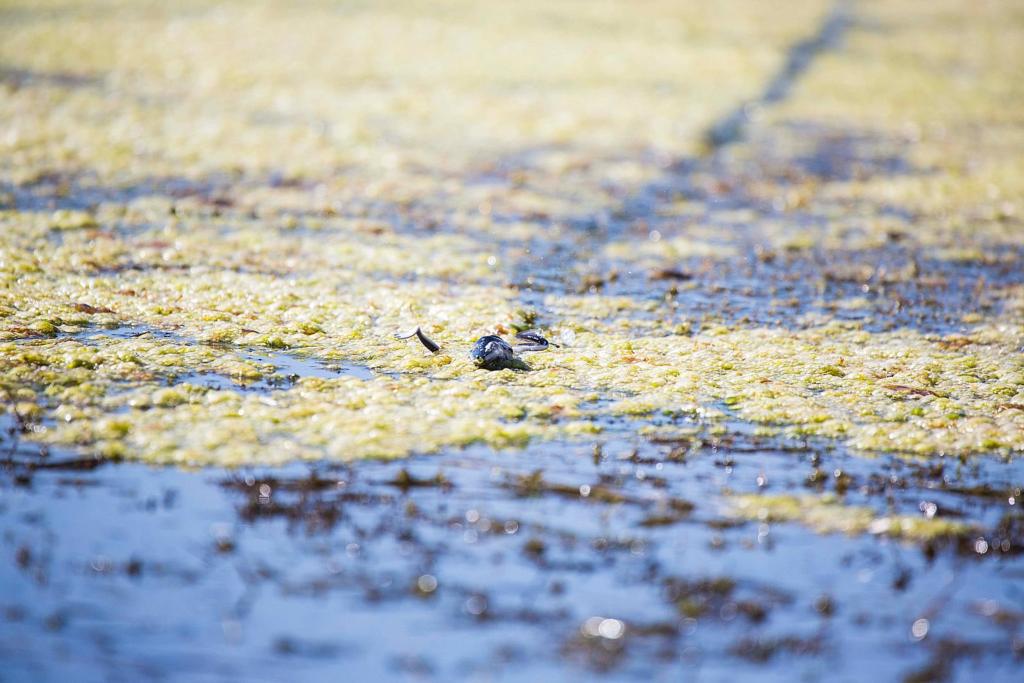
Froggin’ Fall Mats
It’s bass fishing’s take on running the gauntlet, and most would agree that working a topwater frog over matted aquatic vegetation holds legit highlight-reel potential. Unlike the medieval punishment, this gauntlet run seeks – indeed, it relies on – violent strikes, complements of hungry largemouths lurking below.
To get you geared up for fall froggin’ on matted vegetation, we turned to Walmart pro Wesley Strader and Tour pro Michael Neal, a couple of Tennesseans who’ve learned to snatch grass bass from the beds of Tennessee River reservoirs such as Lake Chickamauga in the fall. They offered some solid advice.
Get in the Good Grass
Each species of aquatic grass creates a unique underwater habitat for bass, and the “living space” within the mat changes throughout the season as the grass grows, tops out and, in most cases, eventually dies. It’s important to consider the type of grass and its state of development when you’ve got a frog in hand.
For instance, Walmart pro Wesley Strader notes that while the more sparsely growing milfoil allows bass enough wiggle room to blast their way to the surface, matted hydrilla grows so densely in the summer that it dulls the sensory stimuli and blocks topside access.
“The fish have trouble seeing your bait, hearing your bait and feeling your bait in topped-out hydrilla,” Strader says. “Those hydrilla mats can be several feet thick, and the bass have trouble even reaching the surface.”
During the summer months, getting bites around a hydrilla mat usually means targeting breaks or gaps in the mat, says Neal, especially where you find bait, as such openings allow a bass to hunt and hide.
However, once fall sets in, Strader sees widespread accumulations of a bubbly, yellowish algae coating on grass mats throughout much of the South. Known as “cheese,” this slimy growth blocks enough sunlight to impede photosynthesis, and the grass below sheds its leaves and develops more of a “cavern” space. With only a loose forest of submerged stems, bass can better reach a frog moving overhead.
Bottom line: A healthy hydrilla mat is not so good for froggin,’ but a cheese-choked mat tells you it’s hammer time. When you hit the water this fall, go looking for the cheese – and listen for it too.
“When that cheese forms over the mats, there’s a little insect that hatches in there, and the bluegills and shiners will get up there and feed on those bugs,” Strader says. “You’ll hear them popping and smacking at the surface. That activity attracts the bass, so when you get into an area where you hear a lot of those pops, you’re gonna get bit.”
Frog Tweaks
Those fringy legs that bolster a frog’s open-water ruse are far less important over mats. In fact, Strader sees them as a liability when bass bust through a mat, sometimes only getting the legs in their mouth.
To minimize such short strikes, he’ll tighten the profile of his SPRO Bronzeye Frog 65 by removing the skirt legs and plugging the holes with glue. Neal will modify his Lunkerhunt frog in a similar way, but fills the holes with rattles. The extra noise helps a bass dial in its attack.
In extremely dense mats, adding a small tungsten weight and/or glass rattle chamber into the belly of the frog helps it to depress into the mat and cut a deeper trail, and aids in launching long casts. If the frog sinks slowly in open water, it’s probably weighted just right.
Strader further tricks his frog by adding a No. 2 Colorado blade to each hook arm. With the blade hung from the split ring on one end of a barrel swivel, he threads a rubber spinnerbait collar onto the split ring at the other end to form a stopper similar to that of a spinnerbait trailer hook, then slides that end over the frog’s hook.
If you want a frog that’s already built for the task, consider Snagproof’s Guntersville Flash, which trades the skirts for short, molded feet with rattle inserts and links a single spinner blade to a wire bar connected to both arms of the frog hook.
Tackle and Presentation
Neal says that in practice he covers as much mat area as possible to identify active zones. But in a tournament, assuming he’s found an area within a mat with active fish, he’s more likely to pick it apart – spacing his casts close enough together that his frog drag lines completely cut up the slime. Either way, presentations are simple: straight drags with subtle rod work to simulate a real frog’s surging motion.
Live frogs pause every couple of feet; so should the imposters. Reach an open spot, or the edge of a mat, and work in a little back-and-forth action. Maybe half-in, half-out teasing will entice a follower to make his move.
Stader likes a 7-foot, 10-inch heavy-action Powell rod and a 6.4:1 Lew’s Tournament Pro reel spooled with 65-pound-test braid. This outfit’s a good match for a mat-froggin' formula that’s light on fancy, heavy on forceful.
“I don’t like a high gear ratio because when you hook those fish, you really have to power them out, and you might have 15 pounds of grass on the line,” he says. “The higher your gear ratio, the harder it is to power them out of the mat.”
Hot Spots
Bucket-sized holes in the cheese bespeak recent bass blow-ups. Live or fake frog doesn’t matter. A strike is a strike, and that fish won’t go far. Likewise, prominent “drag marks” indicating recent bass capture merit attention.
Strader stresses the need for polarized glasses for spotting subtle differences, such as thinner spots in the cheese, or the subtle remnants of a recent blow-up hole. He likes Typhoon’s horizon grey lenses for bright conditions or copper rose lenses for cloudy days.
“That cheese will close back up by the next day, so if I see blow-up holes, drag marks or even a little spot the size of a golf ball, I know that’s a productive area,” he says. “There’s some reason the bass like whatever’s below the surface, so your chances of catching one in that area are pretty good.”
Bonus: Michael Neal explaining more about fishing grass mats in the fall.
